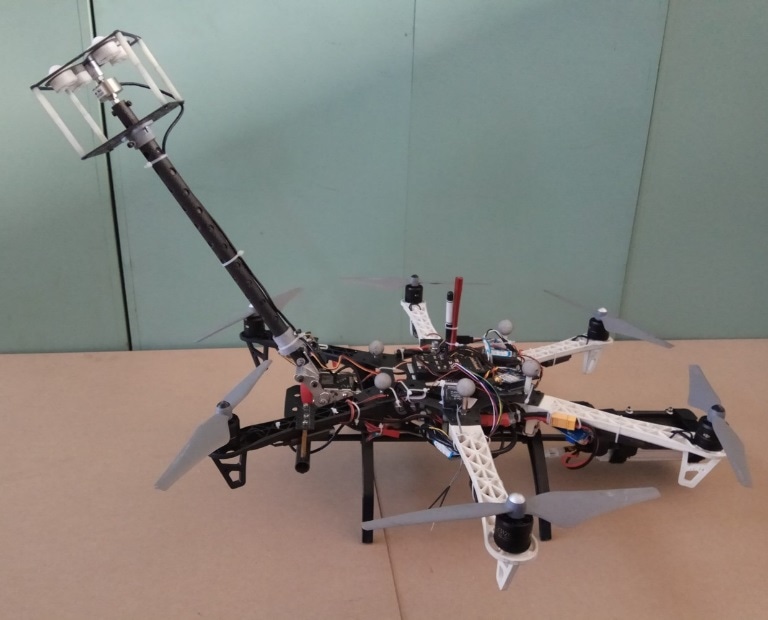Nov 11 2019
Globally, skyscrapers are rising quickly and constantly changing the skylines of cities. However, the repair and maintenance of these skyscrapers have become increasingly complicated.
 The contact aerial manipulator system. Image Credit: MENG Xiangdong.
The contact aerial manipulator system. Image Credit: MENG Xiangdong.
At the Shenyang Institute of Automation (SIA) of the Chinese Academy of Sciences, Chinese researchers have now come up with a potential alternative. They have recently developed a new contact aerial manipulator system that has powerful mission adaptability and excellent flexibility.
The researchers have presented their findings at the 2019 IEEE/RSJ International Conference on Intelligent Robots and Systems (IROS 2019)—a global conference on intelligent systems and robotics held in Macao from November 4th to 8th, 2019.
Conventionally, humans have used gondola systems to perform a routine inspection of high-rise buildings featuring glass curtain walls. But these systems are not only dangerous but also inefficient and expensive.
The latest robot represents a significant development in terms of efficiency and safety. It includes a hex-rotor UAV system as well as a single-degree-of-freedom manipulator cube-frame end effector.
When compared to typical wall-climbing robots, the new robot can avoid obstacles and can also hop over grooves present on wall surfaces. In addition, it can perform interactive operations while flying. Most significantly, the robot has been developed so that the contact force of the entire system can be accurately regulated without using any force sensors.
How to control the force is considered the most difficult problem, since flying robots usually are sensitive to external force.
MENG Xiangdong, Robot Designer, Shenyang Institute of Automation, Chinese Academy of Sciences
MENG informed that the researchers achieved this goal by initially creating a flying robot with closed-loop control that acts just like a standard spring system. According to him, when these control parameters are modified, the elastic coefficient can be altered easily.
“It means that we can take the robot as a spring system so that the contact process can be safe enough,” added MENG.
Experiments were also performed to test the system. For instance, the team installed a light switch to a wall and then programmed the robot to press the switch to turn the light on and off. The new robot operated the switch safely and easily through precise force control.
Another experiment was carried out in which the robot easily moved along a glass wall and applied fixed pressure. It subsequently utilized a pen fixed to the aerial manipulator end to write “SIA”—short for Shenyang Institute of Automation—on the glass wall.
In the near future, we might see an extensive use of this new system in large infrastructure maintenance, and other special applications, such as scientific sampling.
MENG Xiangdong, Robot Designer, Shenyang Institute of Automation, Chinese Academy of Sciences